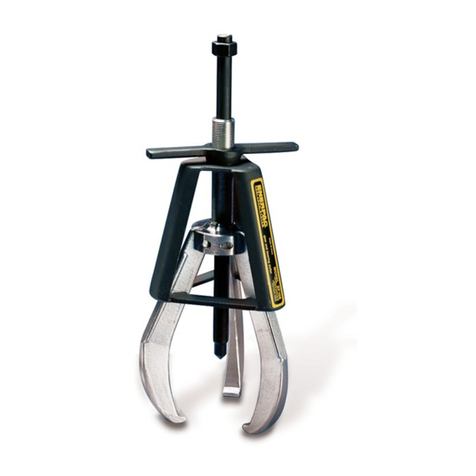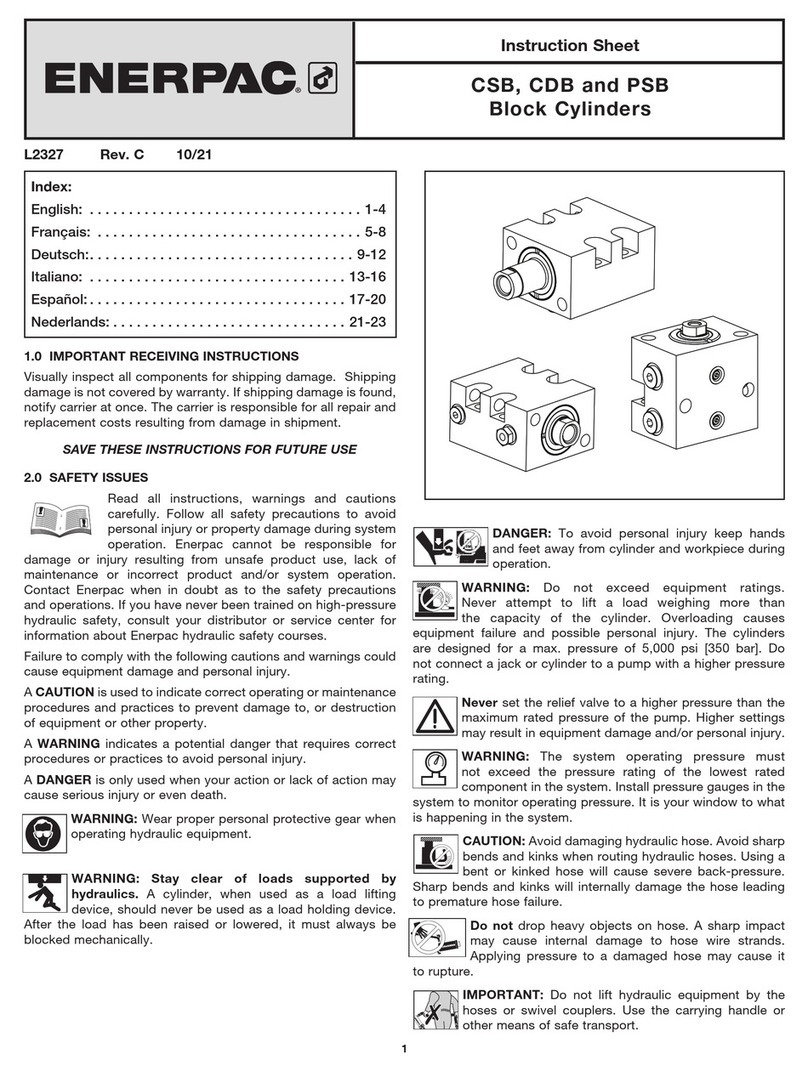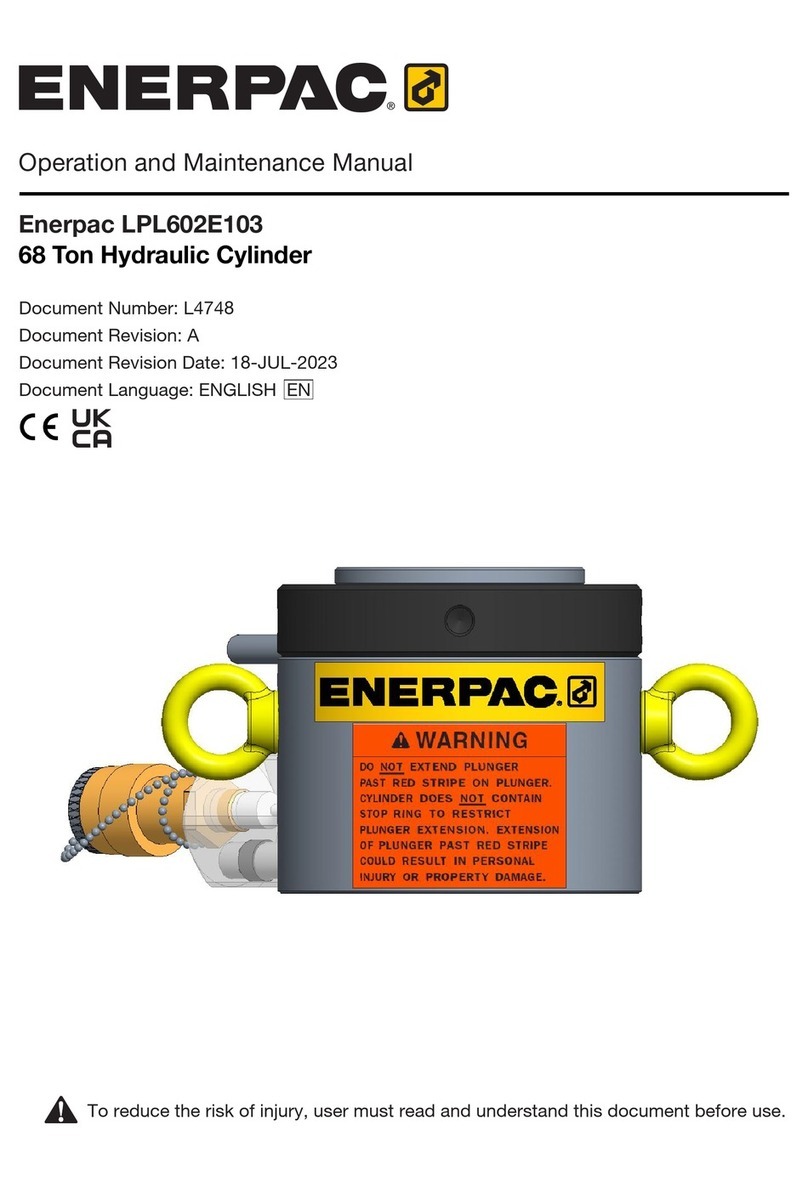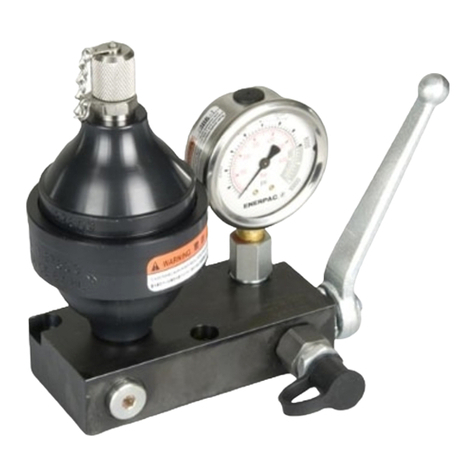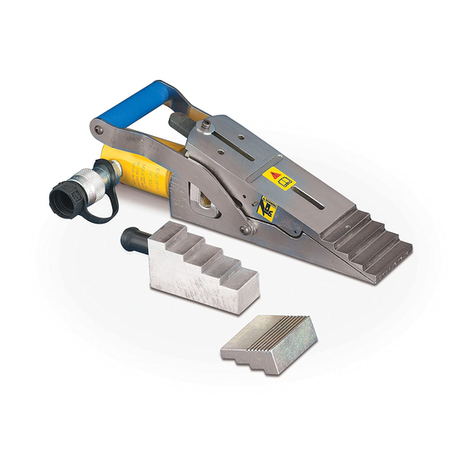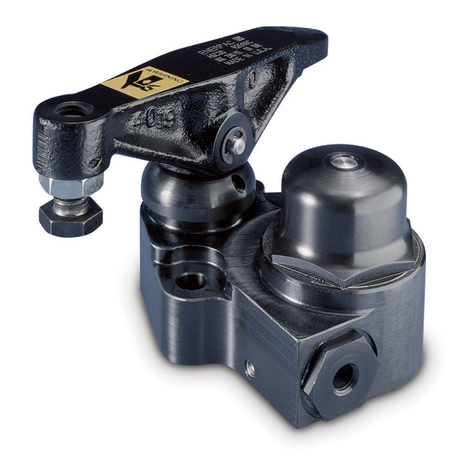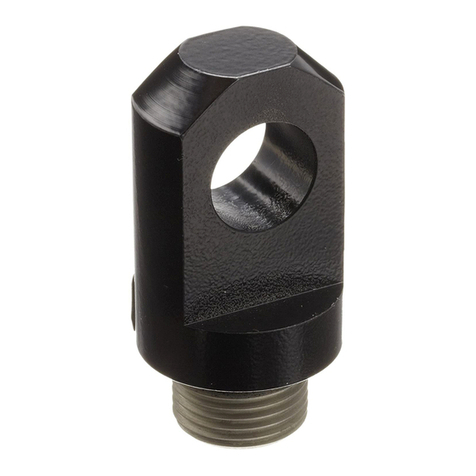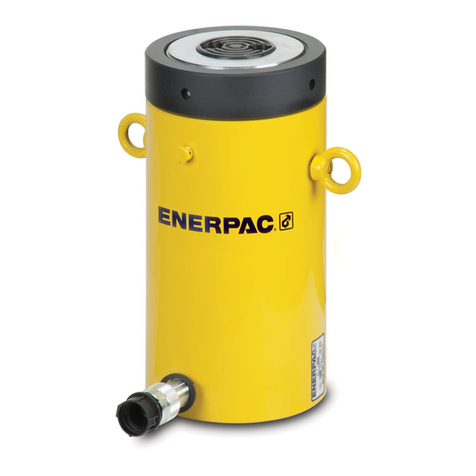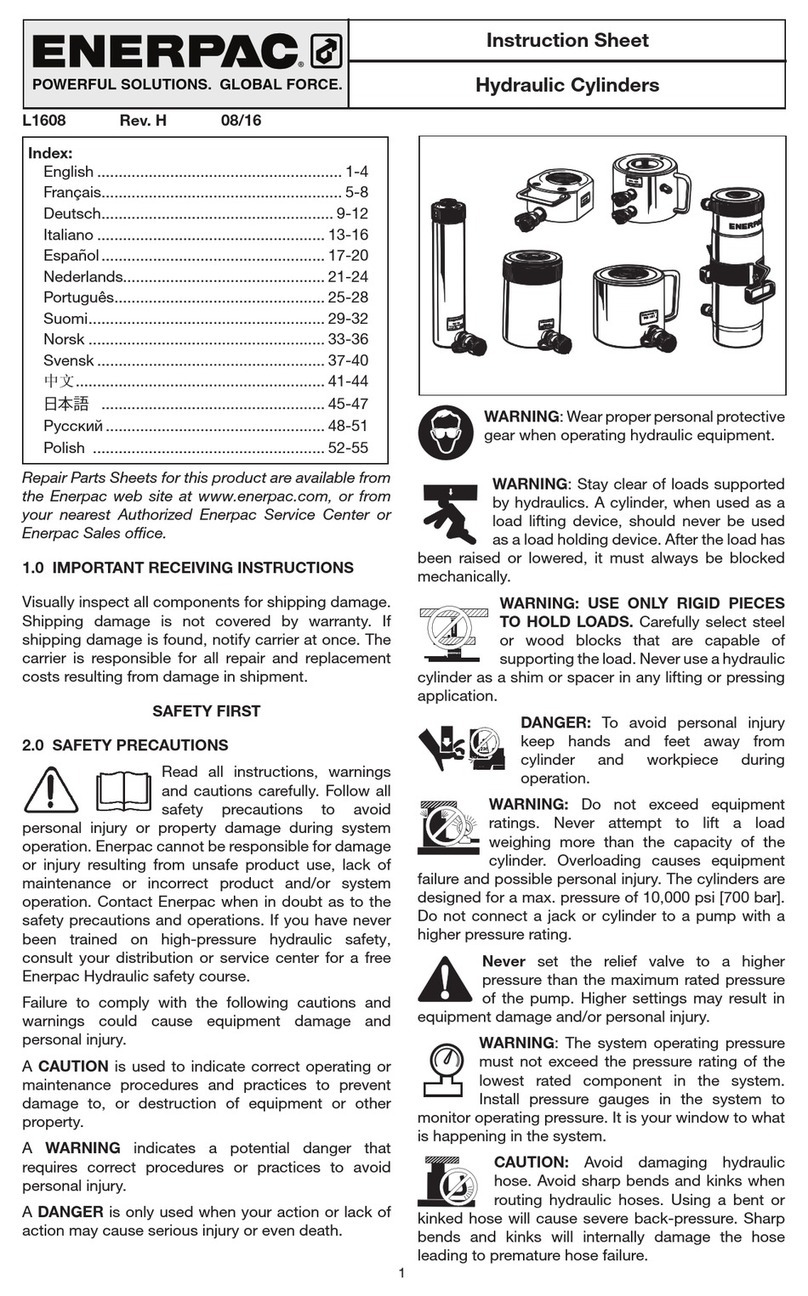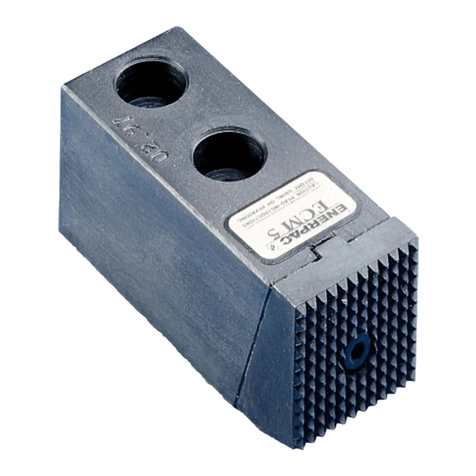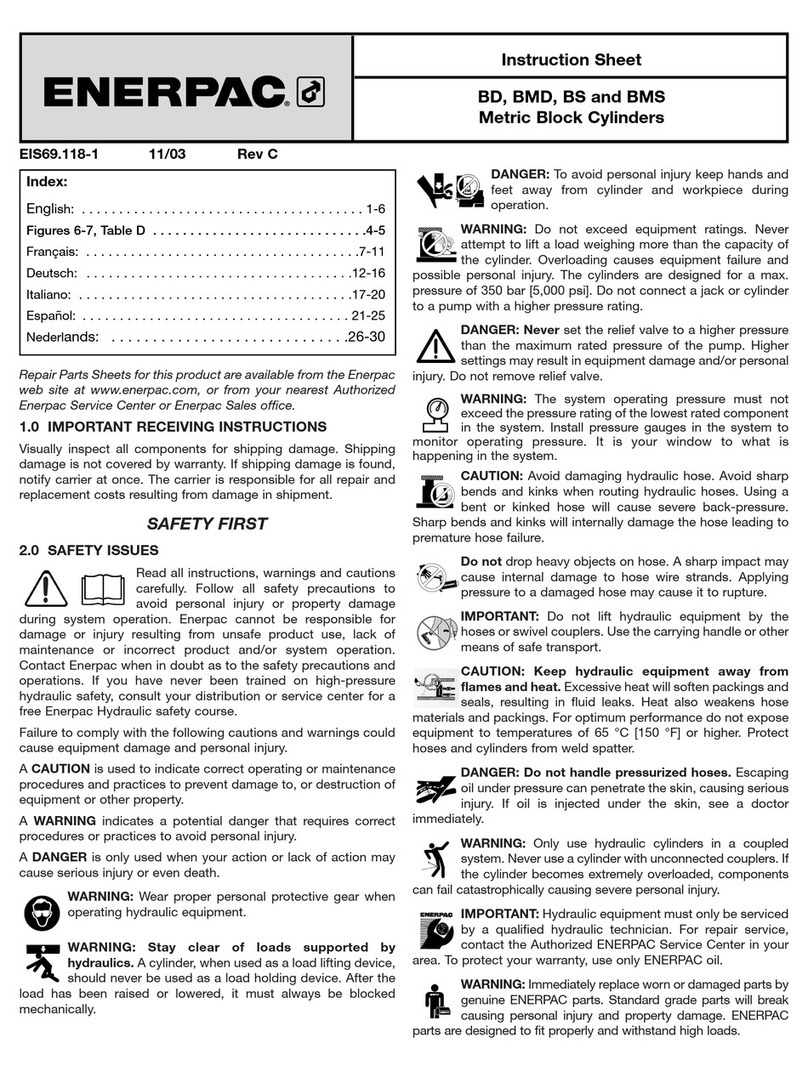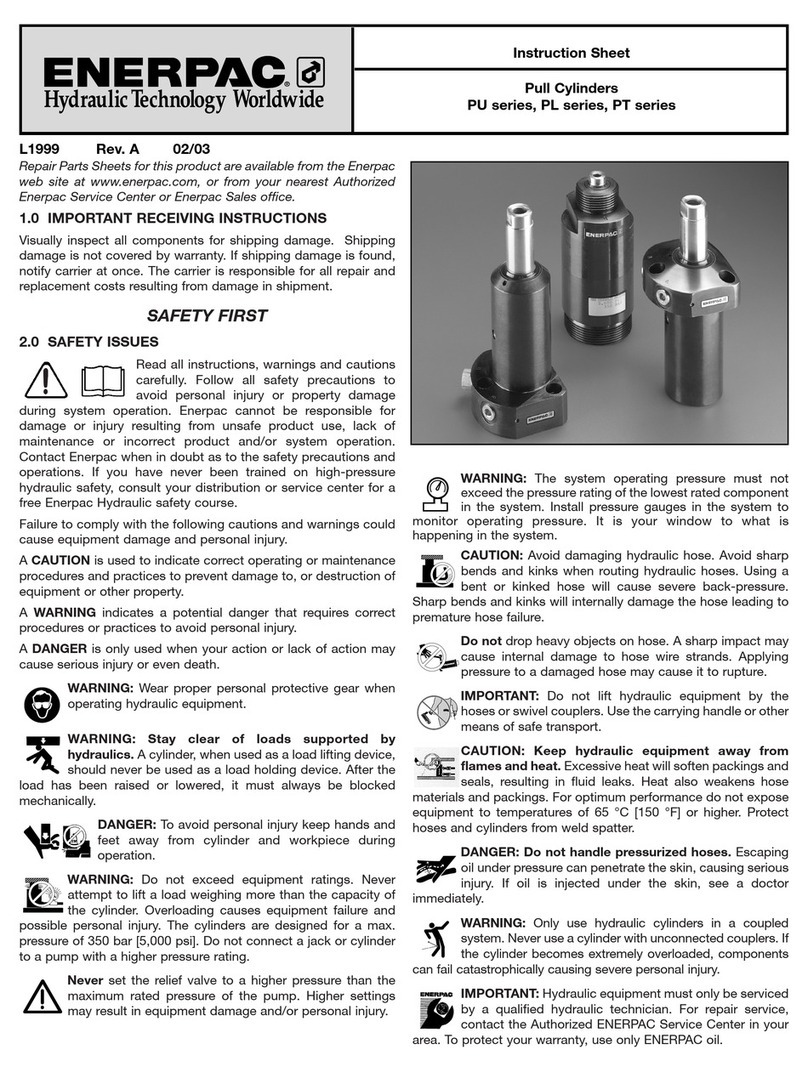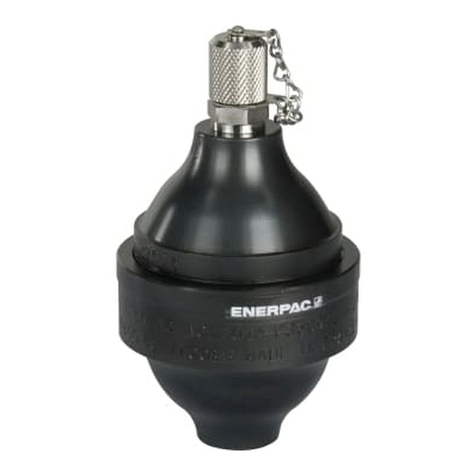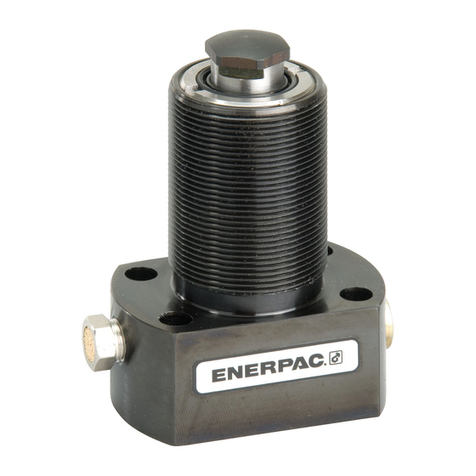
2
hydraulic cylinder as a shim or spacer in any
lifting or pressing application.
DANGER: To avoid personal
injury keep hands and feet
away from cylinder and
workpiece during operation.
WARNING: Do not exceed equipment
ratings. Never attempt to lift a load
weighing more than the capacity of
the cylinder. Overloading causes
equipment failure and possible personal injury.
The cylinders are designed for a max. pressure
of 700 bar [10,000 psi]. Do not connect a jack
or cylinder to a pump with a higher pressure
rating.
Never set the relief valve to a higher
pressure than the maximum rated
pressure of the pump. Higher
settings may result in equipment damage and/
or personal injury.
WARNING: The system operating
pressure must not exceed the
pressure rating of the lowest rated
component in the system. Install pressure
gauges in the system to monitor operating
pressure. It is your window to what is
happening in the system.
CAUTION: Avoid damaging hydraulic
hose. Avoid sharp bends and kinks
when routing hydraulic hoses. Using
a bent or kinked hose will cause severe back-
pressure. Sharp bends and kinks will internally
damage the hose leading to premature hose
failure.
®
Do not drop heavy objects on
hose. A sharp impact may cause
internal damage to hose wire
strands. Applying pressure to a damaged hose
may cause it to rupture.
IMPORTANT: Do not lift hydraulic
equipment by the hoses or swivel
couplers. Use the carrying handle or
other means of safe transport.
CAUTION: KEEP HYDRAULIC
EQUIPMENT AWAY FROM
FLAMES AND HEAT. Excessive
heat will soften packings and
seals, resulting in fluid leaks. Heat also
weakens hose materials and packings. For
optimum performance do not expose
equipment to temperatures of 65°C [150°F] or
higher. Protect hoses and cylinders from weld
spatter.
DANGER: DO NOT HANDLE
PRESSURIZED HOSES. Escaping
oil under pressure can penetrate the
skin, causing serious injury. If oil is injected
under the skin, see a doctor immediately.
WARNING: Only use hydraulic
cylinders in a coupled system. Never
use a cylinder with unconnected
couplers. If the cylinder becomes extremely
overloaded, components can fail
catastrophically causing severe personal
injury.
®
WARNING: BE SURE SETUP IS
STABLE BEFORE LIFTING LOAD.
Cylinders should be placed on a flat
surface that can support the load.
Where applicable, use a cylinder base for
added stability. Do not weld or otherwise
modify the cylinder to attach a base or other
support.
Avoid situations where loads are not
directly centered on the cylinder
plunger. Off-center loads produce
considerable strain on cylinders and plungers.
In addition, the load may slip or fall, causing
potentially dangerous results.
Distribute the load evenly across the
entire saddle surface. Always use a
saddle to protect the plunger.
IMPORTANT: Hydraulic equipment
must only be serviced by a qualified
hydraulic technician. For repair
service, contact the Authorized
ENERPAC Service Center in your area. To
protect your warranty, use only ENERPAC oil.
WARNING: Immediately replace
worn or damaged parts by genuine
ENERPAC parts. Standard grade
parts will break causing personal injury and
property damage. ENERPAC parts are
designed to fit properly and withstand high
loads.
